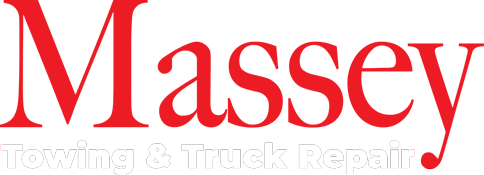Transporting large and heavy equipment is a serious task, no matter if the equipment is being moved far or close by. Equipment needs to be loaded, secured, and unloaded properly to protect valuable machinery. So, it is important to learn how to choose the best transportation option for heavy equipment.
When transporting heavy equipment, all regulations and rules must be followed to avoid fines and accidents. Before starting a heavy hauling task, proper planning should be done to minimize risks. All of these steps to transport a load can be time-consuming and dangerous, so it is best to involve a heavy haul trucking company to assist you.
But what mode of heavy transportation will the company use? How do they decide on a transport option for heavy equipment?
In this article, our heavy-duty towing experts will discuss how to begin the heavy load planning process and will identify features of different trailers that can help determine which type is the best for your heavy hauling job.
First Steps to Choosing The Best Heavy Equipment Transportation Method
To safely haul a heavy load, certain factors need to be considered beforehand. These factors will lead to the decision of the best trailer or hauling vehicle for the job. Heavy-duty hauling companies follow the steps below to ensure the safety of equipment and the hauling team.
Identify the Weight and Height of the Heavy Duty Equipment
The first step to transporting a heavy load is to know the dimensions of the equipment being transported. Many of the regulations set by the United States Department of Transportation depend on weight and size, so verifying the exact dimensions of the item will guide the next transportation steps and decisions.
Determine if a Permit is Needed for Hauling Heavy Equipment
Some oversized and overweight loads require a permit for transportation. Check the regulations of the state(s) you will be passing through on your haul. Some permits also require escort vehicles that alert other drivers of the heavy load.
These permits can increase the cost of the transportation job, so consider possible ways to adjust the equipment to avoid the necessity of an oversized or overweight permit. For example, if the equipment is too heavy, try removing attachments to make it lighter.
Select a Heavy Duty Transportation Option
Look for a trailer or heavy hauler that has the correct capacity to support the cargo. The weight of the trailer itself needs to be taken into consideration when calculating the total weight of the vehicle. Additionally, be sure to choose a trailer or hauler that is low enough to safely pass under bridges and overpasses. Plan the route so that the equipment does not get damaged or stuck.
Heavy Hauling Trailer Options
Different types of cargo have different transportation requirements. These requirements determine the type of trailer needed. Below is a brief guide to popular heavy-hauling trailers and how they help move heavy loads.
Step Deck Trailer
This type of trailer has two main components: an upper deck and a lower deck. The upper deck is about 11 feet long while the lower deck is about 36-40 feet long. Step deck trailers are ideal for tall cargo since they sit about 36 inches above the ground, allowing for more clearance room. Transporters often use this type of trailer to haul construction equipment.
Lowboy / Double Drop Trailer Hauling Option
These trailers are also commonly used for construction equipment transporting. The deck sits a few inches above the ground and has two drops. These drops allow the trailer to transport equipment that would normally exceed height restrictions. Lowboy / double drop trailers are lower than step deck trailers.
Hauling Heavy Equipment on a Flatbed Trailer
This type of trailer can be used in many different ways, but they are popularly used in commercial and industrial equipment transport. Commercial equipment includes items such as generators and HVACs. Industrial equipment is pieces such as engines and mechanical equipment. Flatbed trailers can be loaded from either side, can have ramps attached to them, and can have walls and tarps added to protect the load.
Using an Enclosed Trailer for Heavy-Duty Hauling
These trailers are semi-trailers that are made to protect cargo from outside factors. Even though enclosed trailers can’t carry oversized loads, they can help haul heavy and fragile equipment.
Removable Gooseneck Trailer
This type of trailer is commonly used among all types of heavy equipment transport. They can be used to transport equipment that is long and tall. The front is made so that it can be lowered into a ramp for convenient loading.
Depending on the equipment you need to transport, there can be several hauling options that could get your task completed. Although trailers are the most common method, some machinery may need to be towed. Usually towing is the better option for shorter distances while longer distances often require a trailer.
When machinery is oversized or oddly shaped, a specialized trailer may be needed to transport it. If you are unsure what the safest and most cost-effective option would be, contact a heavy hauling company near you. Heavy equipment specialists can help you figure out the best way to transport your equipment.
Choosing The Best Option Among the Heavy Haul Trucking Companies: Massey Towing & Truck Service
When you have a heavy hauling job that needs to be done safely and efficiently, you need a heavy haul trucking company you can trust. At Massey Towing & Truck Service, we have the knowledge and expertise to complete any transportation task.
We can haul heavy equipment of any size, shape, and weight with our fleet of trailers and heavy haulers. Our drivers are trained to keep your cargo safe on the road, and we promise to take care when loading and unloading your valuable equipment. When you are looking for a heavy hauling company in Texas, contact us to get a quote and get your hauling job started.

